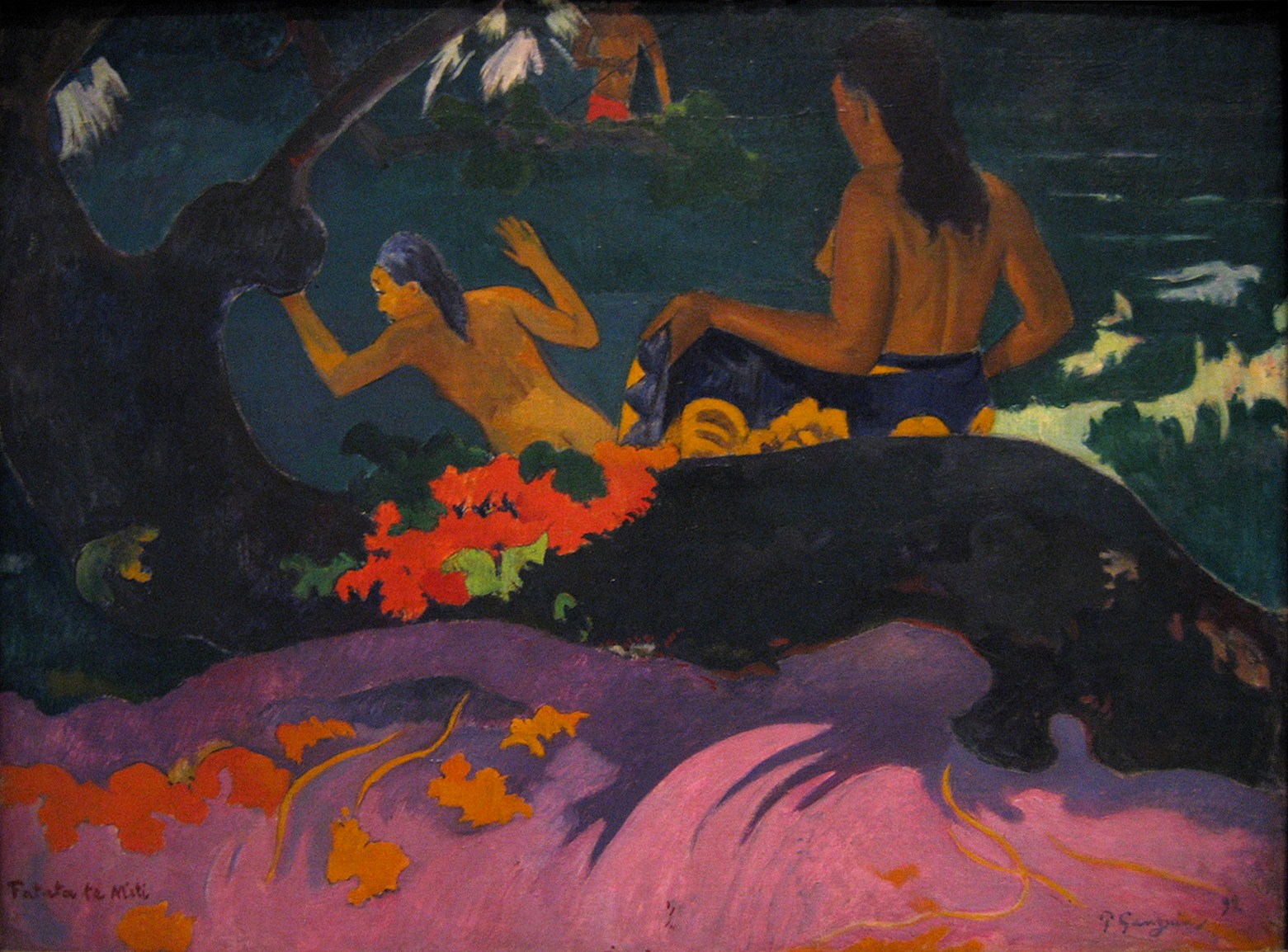art-Gauguin.com
Paul Gauguin 1848-1903
Paul Gauguin - By the Sea. Fatata te Miti 1892
 By the Sea. Fatata te Miti |
From National Gallery of Art, Washingon:
Like Parau na te Varua ino, Fatata te Miti was painted during Gauguin's first trip to Tahiti. Its setting, in fact, is quite similar. The two paintings share brilliant pink sands and vividly colored accents, the brilliant fringed blossoms of the phosphorescing hutu, and on the left the same unusually shaped tree. These similarities point to Gauguin's use of "documents," the term he used for sketches and working drawings that he would incorporate into many paintings and prints.
Their similarities invite us to compare the two works, and in other respects we find they are quite different. Where Parau na te Varua ino is densely symbolic, this painting is a more straight-forward depiction of life on the island. One woman removes her pareo to join a companion already plunging into the sea for a swim. Nearby a man fishes with a spear. The intense, tropical colors—hot oranges and cool blues—convey sensual delight. This is the effortless and uninhibited paradise that Gauguin had hoped to find in the South Seas. Little remained of this life, however, by the time Gauguin reached Tahiti. Polynesian culture had been transformed by western missionaries and colonialism, and the ancient religion replaced by Christianity. Gauguin wrote and illustrated a manuscript about Polynesian mythology, but most of what he knew about the island gods came from previously published sources.